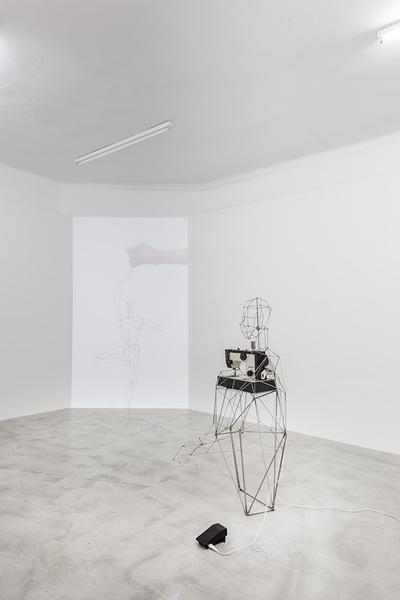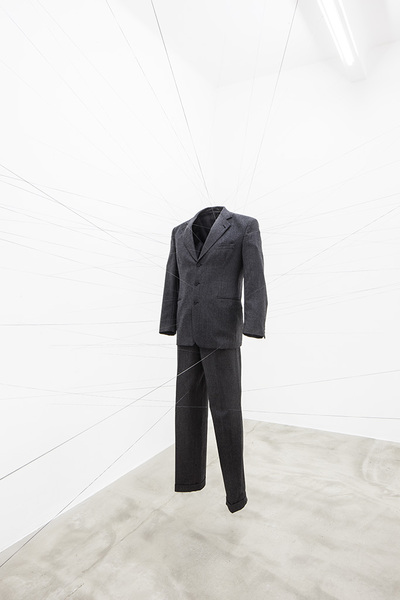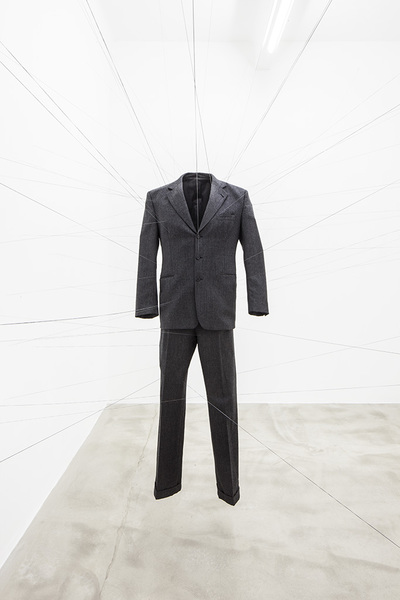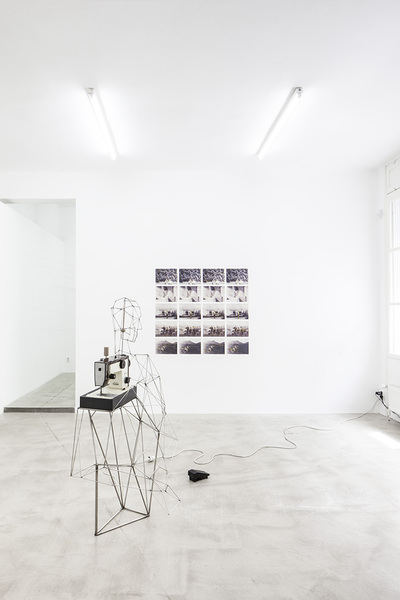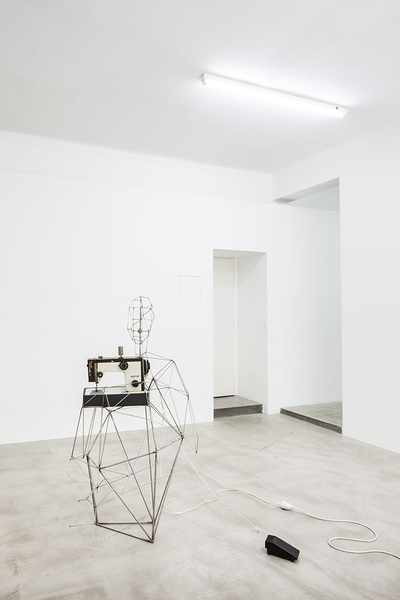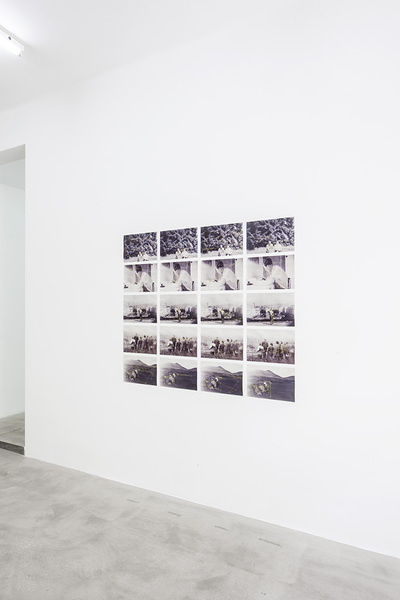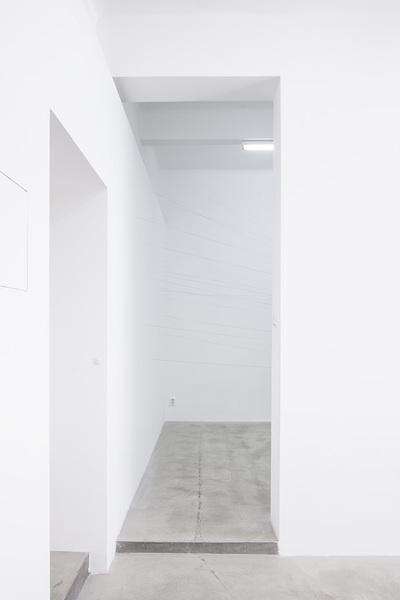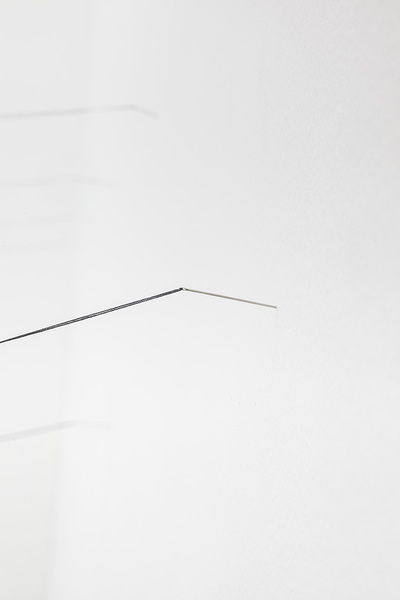Dear Pavla,
Yesterday I failed miserably. I tried to describe something with my hands, a thing that I have no words for, an object from my memory that has never made an appearance again and has lingered in the corner of my mind ever since. I remember the way the object caught the light, the feel of its surface and its weight, but nothing of this I could utter, what remained was my incomprehensible gestures of volume. While continuing this manual choreography, I started to wonder if there is a relationship between making spatial gestures and our memory. Why do we use our hands to describe complicated constructions, tactile experiences and spatial relations?
It seems to be a common human habit, ‘talking’ with your hands. In every culture we use it to enhance the information of our communication’s content or to emphasize it. We even use hand gestures when we meet in the dark, on the phone and maybe the person across the street is doing it right now.
There seems to be an intricate braiding of memory, cognitive capacities, language and the human ability to visualize – not just in images or through language, but also spatially. Studies in the field of psychology, neurosciences, sociology as well as the humanities like architecture focus on this aspect of three-dimensional experience and how this is related to other registers of perception like the workings of the gaze or issues of visual representation. It makes me wonder if we are aware of this when experiencing our environment and when experiencing an artwork, especially sculpture. We are scanning the surfaces of the space and objects with our gaze, we share the same here and now with our senses and bodily presence, and yet what seems to remain is an image, a flat remembrance in our mind. I wonder what happens if we evoke these images back to life, if we give them a palpable presence in space, trying to grasp them and tell their story – but for that I might need my hands.
Warm regards, Alexandra
Drdova Gallery proudly presents Veritas, the new work by Pavla Scerankova. The exhibition offers a spectrum of works, from kinetic sculptures to site specific installations, that center around the relation of spatial representation and perception. The dynamics and potentiality of visualization are a red thread in the work of Scerankova. This can relate to scientific abstract models, like the colliding of universes, to more concrete examples, like the recognition of the human figure. The artist translates these investigations into her work by juxtaposing abstract formal constructions and recognizable, ready-made materials like chairs or porcelain cups. The results are works that hover between sculpture and installation and actively engage the viewer’s perception and imagination.
For the occasion of the exhibition Veritas, Pavla Scerankova and curator Alexandra Landré initiated a dialogue on the practice of the artist as well as questions and issues regarding the relationship between visualization, spatial strategies and formal aspects of sculpture. The collaboration will be presented in the form of a publication after the duration of the show.
Pavla Sceranková studied at the Academy of Fine Arts in Prague from 2000 to 2006; in 2011, she successfully finished her PhD studies there. Within her residency programmes, she has been to a year-long residency in the studio of Professor Tony Cragg in Berlin. She has been shortlisted for the Jindrich Chalupecky Award 2015. She received the Václav Chad Award at the Zlín Youth Salon (2009) and the Cyprian Award at the Biennial of Young Slovak Art in Trnava (2007). She presented her works at a number of solo exhibitions in the Moravian Gallery in Brno (2014), the City Gallery Prague (2013), the Drdova Gallery in Prague (2012), the Cyprian Majernik Gallery in Bratislava (2011), and in the Brno House of Arts (2009). She also participated in collective exhibitions in The Astrup Fearnley Museet in Oslo, Norway, the Arsenal Gallery in Bialystok, Poland, the National Gallery in Prague, the Prague Biennial and the Young Art Biennial in the City Gallery Prague.
Alexandra Landré is curator and art historian specialized in contemporary art, new media and public space. A particular interest goes out to artistic practices that transgress disciplinary boundaries, include research strategies and challenge the relationship between art, everyday life and ‘the public’. She frequently collaborates with artists and has realized projects with numerous initiatives and institutions, like Kunsthalle Muenster (DE), Stedelijk Museum Bureau (NL) and Kunsthalle Wien (AT). Landré frequently contributes to publications, is a tutor at the Royal College for the Arts in The Hague and is based in Amsterdam.

